The legislation aimed to extend efficiency within the sector, promote competition and encourage investment. Annually, manufacturing has accounted for in between 14 and 15 percent of Bolivia’s gross domestic product. The share of industry as an entire to the GDP increased from 30 p.c in 2000 to 37,three percent in 2010. Most industry is a small-scale, geared toward regional markets quite than national operations. Inadequate credit choices and competitors from the black market have kept Bolivia’s manufacturing sector from creating absolutely.
Main Challenges For Bolivia’S Indigenous Peoples
Underemployment of Bolivia’s workforce of nearly 4 million can also be widespread. As a results of the lack of formal employment alternatives, practically 65 % of the city workforce was self-employed in 2002.
Combined, these activities make use of nearly forty four % of Bolivia’s employees. Most agricultural employees are engaged in subsistence farming—the dominant financial exercise of the highlands region.
The most essential structural modifications within the Bolivian economic system concerned the capitalization of quite a few public sector enterprises. (Capitalization in the Bolivian context is a type of privatization where traders purchase a 50% share and administration control of public enterprises by agreeing to invest directly into the enterprise over several years, somewhat than paying money to the government). A major reform of the customs service significantly improved transparency in this space. Inflation has plagued, and at instances crippled, the Bolivian economic system for the reason that Nineteen Seventies. At one time in 1985 Bolivia experienced an annual inflation fee of greater than 20,000 percent.
Leading manufactured items in Bolivia embrace textiles, clothing, non-sturdy client items, processed soya, refined metals, and refined petroleum. In January 2013 Bolivia opened a lithium manufacturing plant in Uyuni, producing mainly potassium chloride. Also, the Bolivian authorities signed intentions to develop not solely lithium extraction but additionally lithium-ion battery manufacturing with quite a few international locations, especially from the Asia Pacific region. Since 2001 Bolivia’s main authorized agricultural export has been soybeans. Additionally, cotton, espresso, and sugarcane have been viable exports for Bolivia.
Parallel legislative reforms have locked into place market-oriented policies, particularly within the hydrocarbon and telecommunication sectors, that have inspired non-public investment. Foreign buyers are accorded national therapy, and international possession of companies enjoys virtually no restrictions in Bolivia. While the capitalization program was successful in vastly boosting foreign direct funding in Bolivia (US$7 billion in inventory during 1996–2002), FDI later decreased as buyers completed their capitalization contract obligations. Starting with the Supreme Decree in 1987, the Government of Bolivia carried out a far-reaching program of macroeconomic stabilization and structural reform aimed toward maintaining price stability, creating conditions for sustained development, and alleviating poverty.
Women Leave Traditional Bolivian Dress In Closet
In 1996, three models of the Bolivian state oil corporation involved in hydrocarbon exploration, manufacturing, and transportation have been capitalized, facilitating the construction of a fuel pipeline to Brazil. The government has a protracted-term sales settlement to sell 30 million cubic metres a day of natural gas to Brazil via 2019. Bolivia has the second-largest pure fuel reserves in South America, and its present domestic use and exports to Brazil account for just a small portion of its potential manufacturing.
Belarus Police Arrest Hundreds At Women’S March
Agricultural manufacturing in Bolivia is difficult by both the country’s topography and local weather. High elevations make farming difficult, as do the El Niño weather patterns and seasonal flooding. Bolivia’s agricultural GDP continues to rise but has attained solely a rather modest average growth price of two.8 % yearly since 1991. Bolivia’s 2016 gross domestic product referred to PPP totaled $seventy eight.35 billion and in the official exchange $35.69 billion.
The tax was used to ascertain the Forestry Stewardship Council, which has been only minimally profitable in forest restoration efforts and eliminating illegal logging. With elevated efficiency, Bolivia could likely broaden the profitability of its forest resources, while still defending them from overexploitation. Bolivia has a small fishing trade that faucets the country’s freshwater lakes and streams. Agriculture and forestry gross home product in 2003, down from 28 p.c in 1986 .
Until 1994 the electricity sector was dominated by the vertically integrated public utility ENDE . In 1994 the electricity sector was privatized and was unbundled into generation, transmission and distribution.
The economic downturn of the late Nineteen Nineties, coupled with privatization and austerity efforts led by President Mesa, resulted in significant unemployment. Although the Bolivian government does not hold unemployment statistics, outdoors experts estimate unemployment to be between 8 and 10 percent of the inhabitants.
The government ultimately cancelled the contract without compensation to the investors, returning the utility to public management. The overseas buyers in this project pursued an investment dispute case in opposition to Bolivia for its actions. A similar situation occurred in 2005 within the cities of El Alto and La Paz.
Its way of life, as measured in GDP in PPP per capita was US$7,191. Economic development was about 5.2% a 12 months and inflation was four.5% in 2012. Expenditures had been almost US$12.2 billion while Click the Following Post revenues amounted to about US$12.6 billion. In April 2000 violent protests over plans to denationalise the water utility within the metropolis of Cochabamba led to nationwide disturbances.
Fiscal and monetary reform lowered the inflation price to single digits by the Nineties, and in 2004 Bolivia experienced a manageable four.9 percent fee of inflation. The economy of Bolivia is the 95th-largest economic system on the planet in nominal terms and the 87th-largest economy when it comes to purchasing power parity. Bolivia is classed by the World Bank to be a decrease middle revenue country. This in style traditional dish is a superb illustration of mestizo cooking in South America, mixing the elements for Spanish empanadas and indigenous Andean dish humitas.
Bolivian Brides
For domestic consumption, corn, wheat, and potatoes are the crops of choice of Bolivian farmers. The Forestry Law of 1996 imposed a tax on sawn lumber and consequently minimize Bolivian lumber exports considerably.
